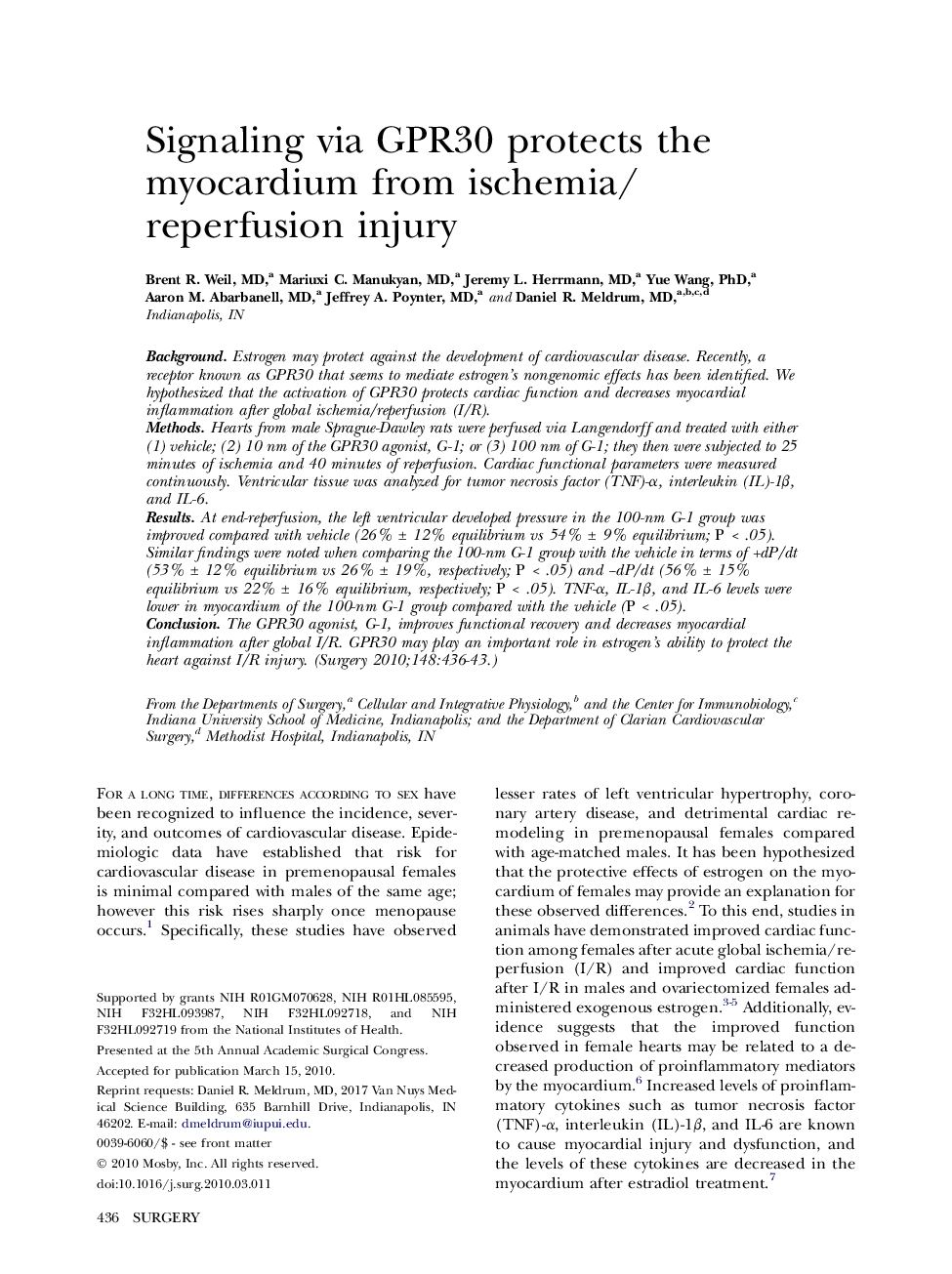| Article ID | Journal | Published Year | Pages | File Type |
|---|---|---|---|---|
| 4308546 | Surgery | 2010 | 8 Pages |
BackgroundEstrogen may protect against the development of cardiovascular disease. Recently, a receptor known as GPR30 that seems to mediate estrogen's nongenomic effects has been identified. We hypothesized that the activation of GPR30 protects cardiac function and decreases myocardial inflammation after global ischemia/reperfusion (I/R).MethodsHearts from male Sprague-Dawley rats were perfused via Langendorff and treated with either (1) vehicle; (2) 10 nm of the GPR30 agonist, G-1; or (3) 100 nm of G-1; they then were subjected to 25 minutes of ischemia and 40 minutes of reperfusion. Cardiac functional parameters were measured continuously. Ventricular tissue was analyzed for tumor necrosis factor (TNF)-α, interleukin (IL)-1β, and IL-6.ResultsAt end-reperfusion, the left ventricular developed pressure in the 100-nm G-1 group was improved compared with vehicle (26% ± 12% equilibrium vs 54% ± 9% equilibrium; P < .05). Similar findings were noted when comparing the 100-nm G-1 group with the vehicle in terms of +dP/dt (53% ± 12% equilibrium vs 26% ± 19%, respectively; P < .05) and –dP/dt (56% ± 15% equilibrium vs 22% ± 16% equilibrium, respectively; P < .05). TNF-α, IL-1β, and IL-6 levels were lower in myocardium of the 100-nm G-1 group compared with the vehicle (P < .05).ConclusionThe GPR30 agonist, G-1, improves functional recovery and decreases myocardial inflammation after global I/R. GPR30 may play an important role in estrogen's ability to protect the heart against I/R injury.
